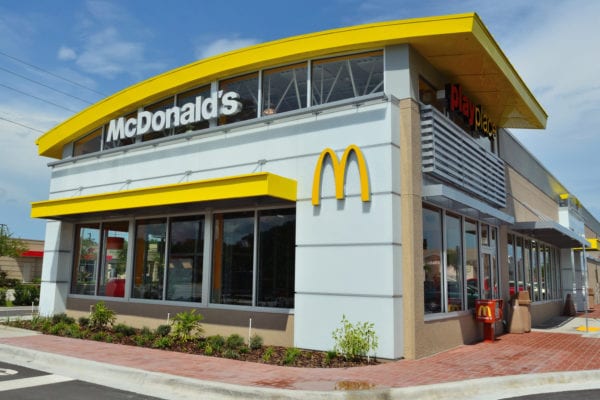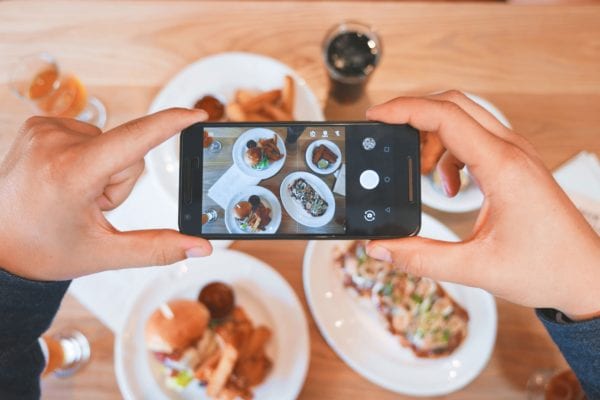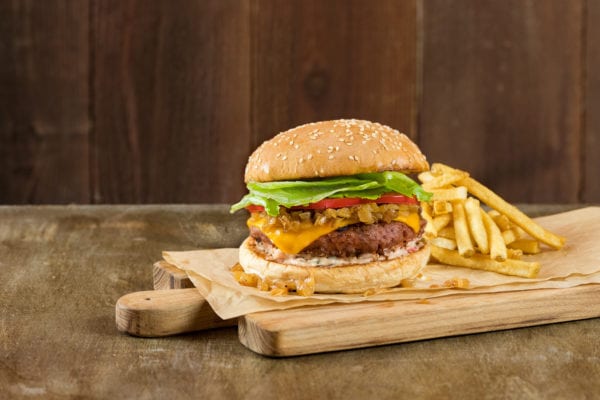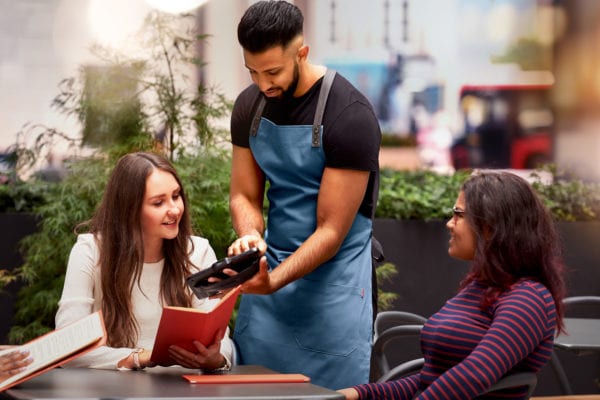Skift Take
Hungry people will be loyal to the delivery app that gets them their food fastest, period. UberEats touts algorithms, analytics, and a little bit of the human touch in its work with restaurants.
— Kristen Hawley
UberEats started nearly three years ago as an experiment in Los Angeles. The service, then called UberFresh started differently than other delivery apps, offering a selection of only five items per day, on demand, as part of the Uber app. The experiment went so well, Uber decided to increase its offerings, pivoting toward a more traditional food delivery model — as it turns out, the dining public prefers food selection to pure speed. In late 2015, the UberEats app launched in Toronto, and has since grown to include over 60,000 restaurants in 112 cities. “Now that we’re at scale, there’s a big opportunity to continue to push the boundaries of food delivery forward and a lot of that has to do with building trust with restaurants and helping advance this world of restaurant and technology,” says Chetan Narain, senior product manager for UberEATS restaurants.
UberEats offers two pieces of software to its restaurant partners: Restaurant Dashboard, which runs on a tablet inside the restaurant, and Restaurant Manager, a web-based tool for owners and managers to see analytics including dish popularity and performance over time. Restaurant Dashboard and the associated app for couriers looks a whole lot like the Uber app you’re used to (the courier app is actually the exact same that a traditional Uber driver uses). Uber drivers can be couriers but not all couriers are Uber drivers — couriers don’t need a car and can walk, bike, or scooter to deliver food, too. Uber’s process of delivering food from restaurant to your door uses much of the same technology that matches you with a driver; when a restaurant signifies an order is ready, Uber searches for the closest available couriers. Here, Narain explains the technology, its recent changes, and all of the opportunity to innovate in the space moving forward.
Chefs+Tech: You recently launched a new version of the dashboard after taking feedback from operators. How is it different?
Chetan Narain: Initially, we released a version of the restaurant dashboard optimized for how quickly we could build it — because we were trying to build and release the product on a very short timeframe. Over the course of the next several months, we gathered a lot of feedback from restaurants about what they liked and what they didn’t like about the dashboard and focused on three things. We incorporated a lot around the idea of a better order acceptance framework into the second version. [C+T note: Each order appears on the iPad, and it’s up to the restaurant to add it into its POS or other workflow.]
Second, restaurants are busy, hectic places and sometimes something can go wrong with the order. For example, you might need to contact the customer about an order modification or an unavailable item, so they need to either contact the customer or cancel the order. Previously, the restaurant had to call our support center and a support agent would handle this for them. That process, though it works, is less efficient for the restaurant. The restaurant can handle a lot of this themselves just by hitting a couple of buttons on the tablet. We wanted to make it really easy for restaurants to understand what to do if something went wrong and be able to take action on those things themselves.
Third, restaurants told us how difficult it is to understand what to do when a courier shows up to pick up the food. The association between an order and a courier was something that was difficult for a lot of restaurants. So we wanted to help restaurants, make it more evident what was going on with couriers and make it easier to associate orders with couriers. One of the big challenges is the instances where a single courier arrives to pick up more than one order. Displaying multiple orders led to a lot of problems with the hand-off where sometimes the right food wasn’t being given to the right person, or all of the food wasn’t being given to the right person. To solve that issue, we moved the list of couriers onto one side, using their names and what orders they’re there to pick up. These are the three areas we’ve focused on; we’ve taken restaurant feedback and built something that helps them.
What about on the restaurant side? What other information does a restaurant owner or manager have access to besides the ordering and order fulfilment platform?
Narain: Restaurant Manager, which is a portal for restaurant owners and managers to go go into that services information about their business. It includes everything from payment history to analytics: information about how the restaurant is performing in terms of particular operational metrics and how those relate to demand that they will get on UberEats. It also includes information that helps guide them toward new types of menu items they could offer or other restaurant changes they could make. One of the most useful pieces of information is the meal rating that UberEats users give every dish after they order it. This piece of information answers a very fundamental question: How good is my food? Most restaurants, in the absence of technology, find that question difficult to answer. Because we have all this data from our customers now we can start to service that to restaurants.
In Restaurant Manager there’s a section around customer satisfaction where for every dish we ask what fraction of customers gave the dish a “thumbs-up” and what are the tags associated with the “thumbs-down” ratings that were received? For example: a dish is rated 75 percent thumbs up. Of the people who gave it a thumbs down, 90 percent mention portion size, or 90 percent mention presentation or how the dish held up. This gives restaurants a lot of guidance in terms of how they can change or adapt their menu for this world of delivery. We’ve seen a bunch of restaurants use this and to change not just what they’re doing for delivery, but change what they’re doing in-store as well.
My favorite example is a Singapore restaurant called Yolo Foods. Because UberEats now gives the owner this information, he uses delivery as his experimentation platform for new dishes that he wants to try out in his restaurant. One thing that’s really important to delivery is how quickly a customer will get their food after they place an order, and part of that comes down to how quickly the restaurant is able to make their food. A Vietnamese restaurant in San Francisco, Co Nam, gave us a preparation time of something like 20 minutes. Once we started working with them, the owner made speed a priority in his kitchen and actually took that 20 minutes down to seven. He’s doing really interesting optimizations in his back of house to shave off seconds off of prep time. The introduction of delivery has changed everything. Certain dishes travel better than others. Certain ingredients that travel better than others. Guidance in terms of even meal composition is a thing.
The popularity and availability of delivery services has changed the way restaurants operate their physical locations. Do you give any guidance to restaurants on physical flow, or where to direct couriers once they’re inside the restaurant?
Narain: There’s a huge opportunity to go deeper with restaurants in terms of how to build workflows that can adapt for delivery. The reality is that a lot of restaurants were built for a world where the majority of traffic is walk-in traffic. Someone walking up to your counter or someone ordering food through a waiter is a very difference experience for your workflow than a tablet displaying orders and a courier coming several minutes later to pick it up. We’re still at the very early stages, partnering closely with a couple restaurants to try to work through some early concepts. Today, there are particular signs that exist for couriers that say “UberEats pickup here,” where it’s helpful both to the restaurant and to the courier.
What’s the difference between working with a restaurant at scale, like McDonald’s versus an independant restaurant?
Narain: McDonald’s has spent a lot of time understanding best practices for restaurant operation in general, so there’s actually a lot of learning that goes both ways between McDonald’s and Uber. A lot of the changes that we’ve made for McDonald’s are actually things that are just good for all restaurants on the platform. For example, McDonald’s is very interested in servicing nutritional information on their dishes. When someone looks at a McDonald’s dish in the UberEats app, they see calorie information. In this case, working with McDonald’s has actually enabled us to make the marketplace better for everyone. The workflow we’re building with McDonald’s is different based on how quickly they’re able to produce food. This is making us think about other ways to improve the experience for all restaurants that make food quickly. There are a lot of things that apply to all restaurants, not just McDonald’s.
Last question: Are there any plans to work all of this into restaurant POS systems to avoid the multiple-iPads-at-the-counter problem?
Narain: We have done POS integrations in the past. They have generally been successful and so it is something that we’re interested in. It is something that we believe that there’s opportunity in.




